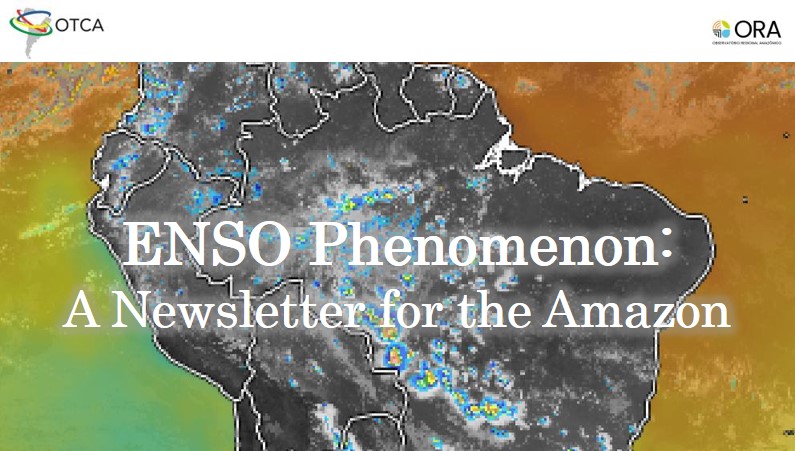ENSO Phenomenon: A Newsletter for the Amazon – December 2023

Dez, 2023 | ARO, ACTO, ENSO, El Niño, Amazon

In December 2023, there was a slight decrease in sea surface temperatures (SSTs) in the equatorial Pacific Ocean. However, they persistently remained above average, signaling the ongoing presence of El Niño, particularly notable for higher anomalies in the central Pacific region. The latest Niño Index values revealed the strengthening of the El Niño, with the ocean temperature in the reference region (Niño 3) still considered very strong, and anomalies higher than 2.0°C.
Forecasts from integrated ocean-atmosphere models suggest the persistence of El Niño conditions throughout the fall months (March to June) of 2024, with the peak intensity anticipated in the January to March quarter of the same year. This phenomenon is expected to influence on climate and weather conditions in the country during the upcoming quarter.
The likelihood of transitioning to Neutral ENSO conditions becomes prominent, presenting a 60% chance of occurrence between April and June 2024, and maintaining this status throughout the subsequent two seasons of the forecast period. By July to September 2024, no particular category emerges as dominant, with ENSO neutral and La Niña equally probable. However, from August to October 2024, La Niña becomes the most probable category, with a 52% probability.
Despite a gradual resurgence of rainfall in the Amazon region in December, anomalies in rainfall were below normal in the central, eastern, and southern parts of the region. In other western areas, including Bolivia, Peru and parts of northern Brazil, rainfall was irregular, with slightly above-average precipitation, but still below average to determine the start of the rainy season. However, the increase in flows within the Amazon River tributaries helped mitigate or eliminate navigation disruptions in the Purus, Juruá, Madeira, Solimões, and Negro rivers.
The climate forecast for January-February-March 2024 points to an increased probability of below-normal rainfall, particularly affecting portions of the Amazon, notably the central, southern, and eastern regions.
It’s crucial to acknowledge that climatological patterns typically designate January and February as the wettest and warmest months in the Southern Hemisphere. Given the confluence of El Niño and the elevated temperatures in the Atlantic Ocean, the situation could exacerbate, leading to drier riverbeds and the onset of extreme heat in the Amazon region, particularly in its southern and eastern expanses.
